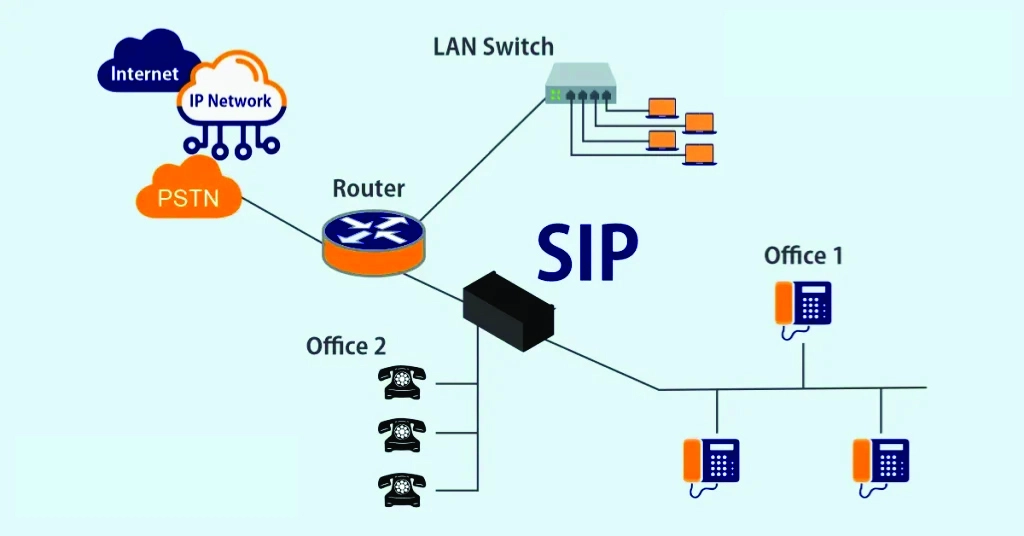
Introduction
In today’s interconnected world, efficient communication is key for businesses and individuals alike. With the advent of technology, traditional phone lines have evolved into more advanced systems like Session Initiation Protocol (SIP) trunks and Voice over Internet Protocol (VoIP). These two technologies have revolutionized the way we communicate, offering cost-effective solutions with enhanced features. In this article, we will delve into the differences between SIP trunks and VoIP, exploring their functionalities, benefits, and suitability for home use.
Understanding SIP Trunks
SIP trunking is a method of delivering telephone and other communication services over the internet rather than through traditional phone lines. It utilizes the SIP protocol to establish and manage communication sessions, allowing for voice, video, and messaging services. SIP trunks can be implemented in various scenarios, from small businesses to large enterprises, providing scalability and flexibility.
One of the primary advantages of SIP trunking is its cost-effectiveness. By utilizing existing internet connections, businesses can significantly reduce their communication expenses compared to traditional phone lines. Additionally, SIP trunks offer scalability, allowing organizations to easily add or remove lines based on their changing needs without the hassle of physical installations.
Exploring VoIP
VoIP, on the other hand, is a broader term that encompasses various technologies for delivering voice communications over the internet. Unlike SIP trunks, which focus on trunking services, VoIP includes applications and services that enable voice communication using internet protocols.
VoIP systems can range from simple software-based solutions to complex enterprise-grade platforms. They offer a wide range of features, including call forwarding, voicemail, conference calling, and more. VoIP can be deployed using different methods, such as hosted VoIP services or on-premises VoIP systems, providing flexibility for businesses of all sizes.
Comparing Features
When comparing SIP trunks and VoIP, it’s essential to consider their features and functionalities. While both technologies enable voice communication over the internet, they differ in their approach and capabilities.
SIP trunks primarily focus on providing connectivity between the Public Switched Telephone Network (PSTN) and an organization’s internal communication system. They serve as virtual phone lines, allowing businesses to make and receive calls using their existing infrastructure. However, SIP trunks may lack some advanced features commonly found in VoIP systems, such as unified communications and collaboration tools.
VoIP, on the other hand, offers a more comprehensive suite of features beyond basic calling. With VoIP, users can access voicemail, call forwarding, auto-attendants, and integration with other business applications. VoIP systems often include unified communications capabilities, allowing for seamless integration of voice, video, and messaging services.
Suitability for Home Use
While SIP trunks and VoIP are traditionally associated with business environments, they can also be suitable for home use, especially with the rise of remote work and virtual communication. When considering SIP providers for home use, individuals should evaluate their specific needs and preferences.
For basic home communication needs, such as making and receiving calls, both SIP trunks and VoIP can be viable options. However, VoIP may offer more flexibility and features tailored to residential users, such as virtual phone numbers, voicemail-to-email transcription, and mobile app integration.
Conclusion
In conclusion, SIP trunks and VoIP are two distinct yet related technologies that have transformed the way we communicate. While SIP trunks focus on trunking services for businesses, VoIP encompasses a broader range of voice communication solutions, including advanced features and applications.
When choosing between SIP trunks and VoIP, businesses and individuals should consider their specific requirements, budget constraints, and scalability needs. While SIP trunks offer cost-effective connectivity, VoIP provides a comprehensive suite of features for enhanced communication and collaboration.
Whether for business or home use, both SIP trunks and VoIP offer compelling advantages in terms of cost savings, flexibility, and functionality. By understanding the differences between these technologies, users can make informed decisions to meet their communication needs effectively.





